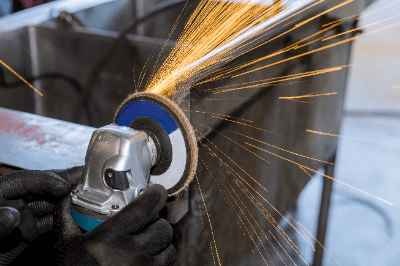What Is Grinding Polishing?

Grinding polishing is a machining process that involves shaping, refining, and smoothing materials like metal. This process includes three primary stages: cutting, grinding, and polishing. Cutting shapes the workpiece, grinding fine-tunes its dimensions, and polishing removes fine surface irregularities.
Different techniques are used in grinding polishing, with diamond or cubic boron nitride (CBN) abrasives being common. Electrolytic grinding and polishing, conducted within an electrolyte solution, is another method employed.
Uses of Grinding Polishing
Grinding polishing has diverse applications, from deburring industrial products to fabricating precise machine components. It is used on a variety of materials, including metal and some wooden products. Common applications include:
- Household Items: Coffee mill grinders, furniture, knives, and scissors.
- Machine Parts: Bearings, washers, metal pipes, tubes, and screws.
- Transportation Equipment: Aircraft propellers, automobile brake discs, crankshafts, railway vehicle wheels, and ship propellers.
- Tools: Circular saws.
Types of Grinding Polishing
Grinding polishing is primarily categorized into abrasive grinding polishing and electrolytic grinding polishing:
- Abrasive Grinding Polishing: Grinding employs abrasive grains that act as blades to incise the workpiece. In contrast, polishing uses these grains under constant pressure to smooth the surface.
Key types of abrasive grinding include:
- Flat Grinding: Involves a fixed workpiece and rotating grinding abrasive.
- Cylindrical Grinding: Both the workpiece and grinding abrasive rotate.
- Internal Grinding: Grinds the interior of pipes by rotating either the workpiece and grinding abrasive or just the grinding abrasive.
Abrasive polishing methods are the fixed abrasive method and the free abrasive method using magnets.
- Electrolytic Grinding and Polishing: This method involves immersing the workpiece in an electrolyte solution and using an electrolytic reaction to dissolve the surface. It is suitable for stainless steel, titanium, and aluminum.